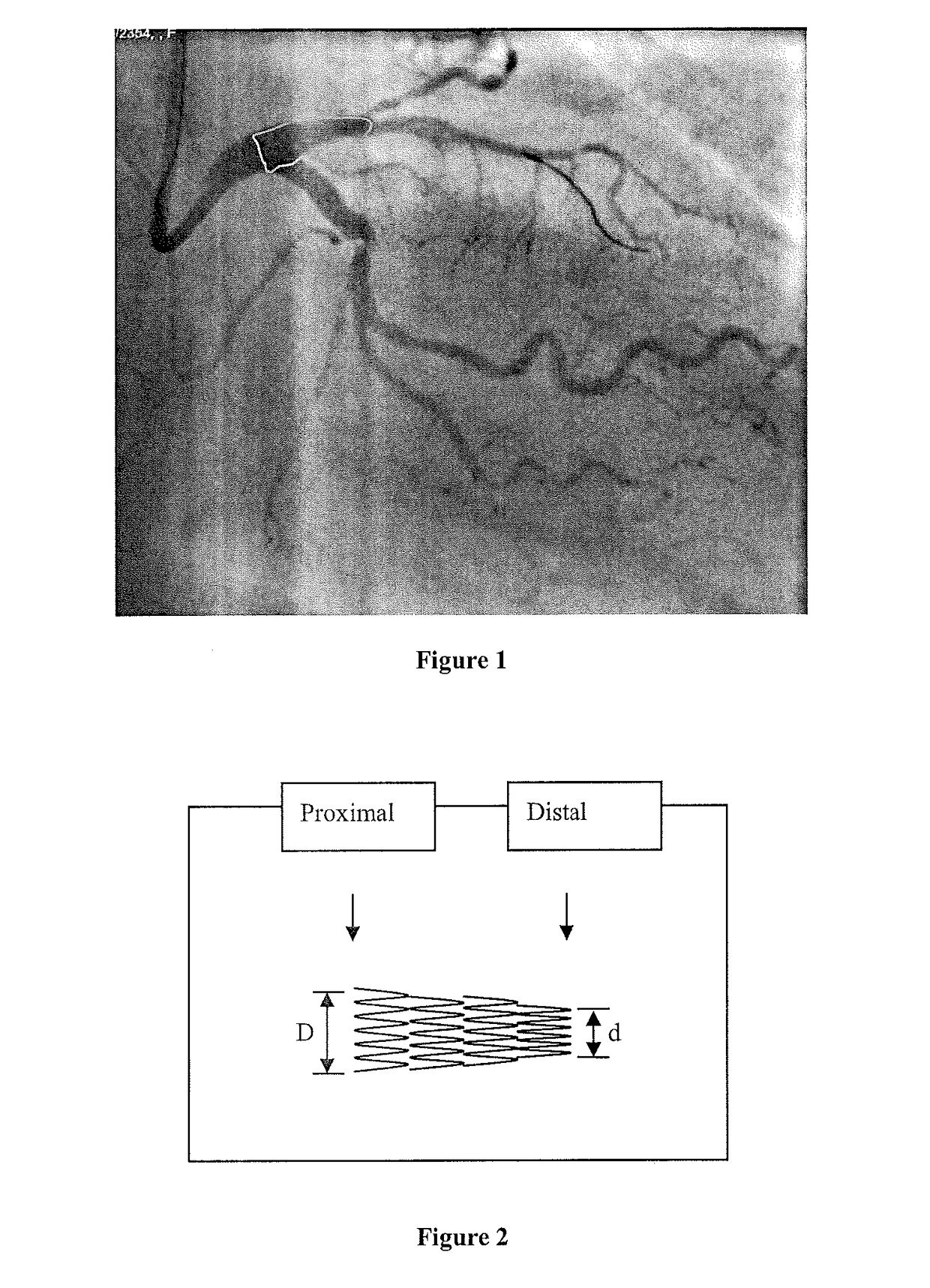Method of producing personalized biomimetic drug-eluting coronary stents by 3D-printing
a 3d printing and personalized technology, applied in the field of medical equipment, can solve the problems of long-term impact on the coronary arteries, reduce and improve the prognosis and quality of life of patients, the effect of reducing the complications of coronary artery disease intervention therapy
- Summary
- Abstract
- Description
- Claims
- Application Information
AI Technical Summary
Benefits of technology
Problems solved by technology
Method used
Image
Examples
Embodiment Construction
[0029]In order to make the purpose, technical solutions and advantages of this invention clearer, this invention will be described in detail combined with the embodiments and figures below.
[0030]In clinical situation, the position and shape of the lesion in coronary artery are always different. The diameter between the proximal and the distal of the lesion sometimes has huge difference, especially on the terminal of the left main coronary artery or the ostial of the left anterior descending and the left circumflex coronary artery. Current data has shown that conical coronary artery is very common in clinic.
[0031]FIG. 1 has shown an angiography of the conical coronary artery lesion. The patient has a diffuse lesion from the left main to the anterior descending coronary artery. The diameter of the left main coronary artery is 4.5 cm while it is only 2.0 cm in the anterior descending coronary artery.
[0032]Traditional coronary artery stent is cylindrical metal stent which has the same l...
PUM
| Property | Measurement | Unit |
|---|---|---|
| diameter | aaaaa | aaaaa |
| size | aaaaa | aaaaa |
| sizes | aaaaa | aaaaa |
Abstract
Description
Claims
Application Information
 Login to View More
Login to View More - R&D
- Intellectual Property
- Life Sciences
- Materials
- Tech Scout
- Unparalleled Data Quality
- Higher Quality Content
- 60% Fewer Hallucinations
Browse by: Latest US Patents, China's latest patents, Technical Efficacy Thesaurus, Application Domain, Technology Topic, Popular Technical Reports.
© 2025 PatSnap. All rights reserved.Legal|Privacy policy|Modern Slavery Act Transparency Statement|Sitemap|About US| Contact US: help@patsnap.com

